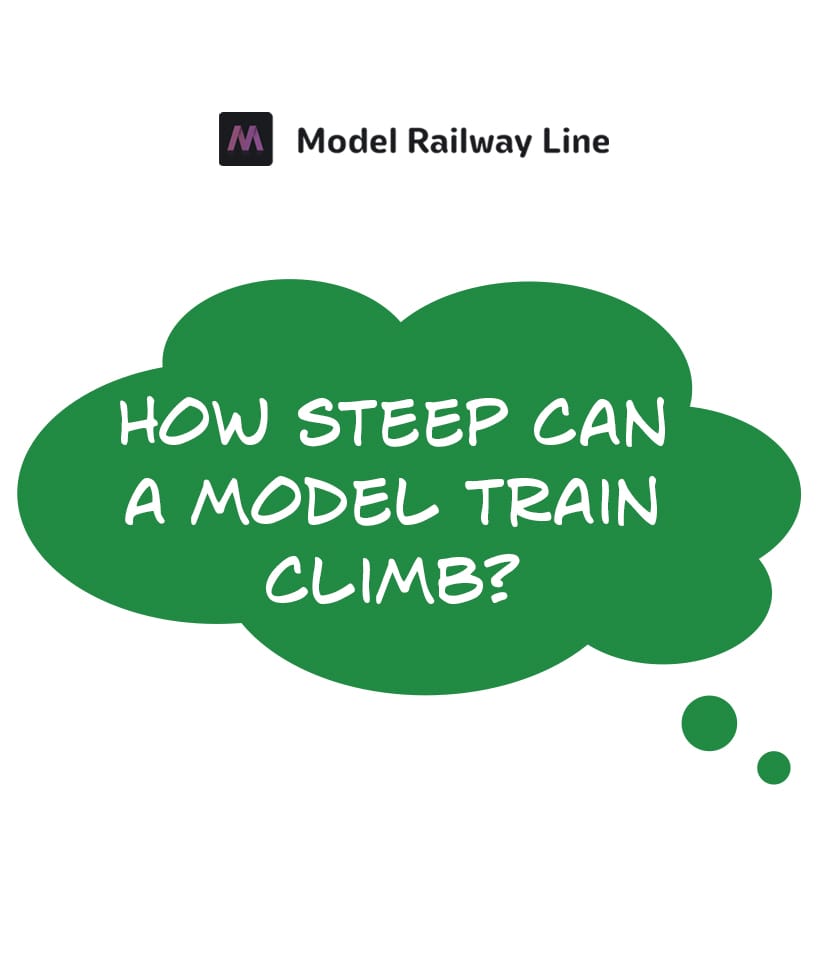How Steep Can a Model Train Climb?
Find out the maximum gradient that model trains can safely climb whilst maintaining reliable and efficient operation.

If you're looking to create a model railroad with variety, interest and realism, then you'll likely want to incorporate hills and gradients into the track layout.
Having model trains running around a basic track design is great, but if the tracks are flat with no inclines then it can significantly limit the variety and realism of the experience and will likely get boring very quickly.
However, constructing model train inclines is not simply a case of raising some track up to the desired height and running with it.
Careful consideration of the areas that make up the gradient (run, rise and grade) need to be taken into account when designing track plans. We also need to consider the fact that trains are not very good at climbing gradients. Let's take a look.
Why can't trains go uphill?
Trains are inherently bad at climbing gradients.
The percentage of a train wheel that comes into contact with the railhead is very small. This means that the traction available for climbing a gradient is comparatively small.
If the grade is too steep there'll be insufficient traction to compete with the opposing force of the drag of the locomotive. This can result in the train stopping or rolling back downhill.
As railroad modellers, there are a number of areas that we need to consider in order to achieve reliable and efficient gradient climbs.
Wheel gauge, locomotive clearance, track curvature, adjustment and alignment of couplings, and weight adherence of rolling stock are all areas that potentially affect the reliability and efficiency of model train gradients.
However, the most fundamental point that we need to take into account is the most efficient and reliable percentage grade of climb for a model train.
What's the steepest grade a model train can climb?
When building model railroads we need to know the steepest grade that the trains can climb.
Model railroad gradients are made up of the rise (the change in vertical height from the start to the end of the gradient), run (the horizontal distance from the start of the grade to the end), and the grade (the incline that determines the rate at which model trains are able to travel to a higher or lower level).
Model railroad gradients should be carefully designed so that trains can climb these inclines reliably and in the most efficient manner whilst taking these values into account.
To enable us to achieve this as modellers, we need to follow some industry recommended guidelines.
The widely accepted maximum gradient for a model train is 1 in 30 (3.33%), however many modellers recommend not exceeding a grade of 1 in 40 (2.5%) in order to achieve reliable running.
Keeping to these incline restrictions will ensure the model locomotives are able to efficiently climb the gradients on your layout.
Calculating model train gradients
So, just how do you calculate the percent grade required for your model trains?
To help you work this out we've created a handy online model train incline calculator tool that takes values for the run and the rise and calculates the percentage grade for you.
You can also calculate this manually by using a special model train incline formula - we cover how to do this in our guide to model train gradients, so be sure to check that out.
Summary of model train inclines
The steepest gradient that a model train can climb is 1 in 30 (3.33%).
However, experienced railroad modellers recommend not exceeding an incline of 1 in 40 (2.5%) to ensure consistent reliability and efficient climbing.
You can work out model train gradients by using our simple incline calculator tool or by calculating manually using the incline formula.

